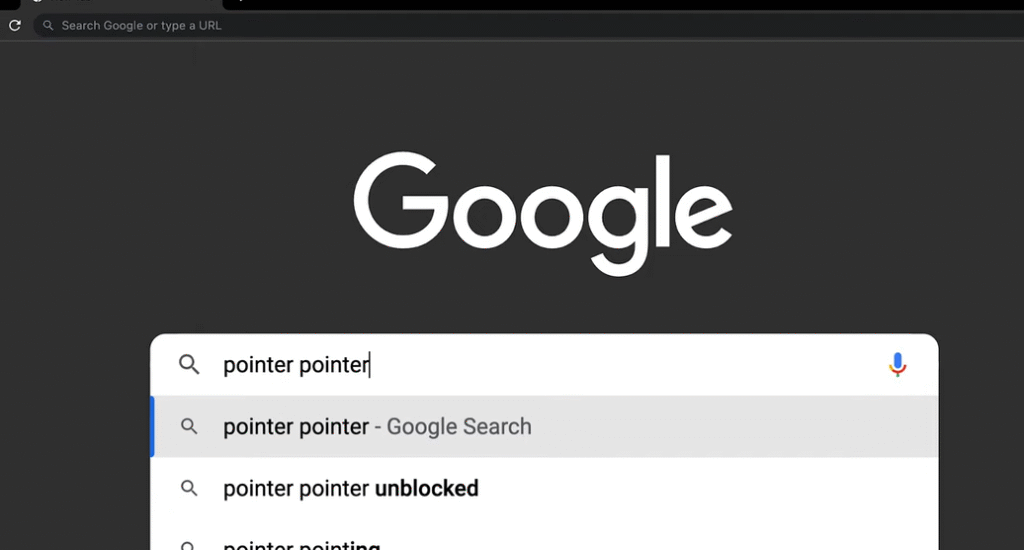Recently, there has been some curious conversation about Pointerpointer.com, a website that is frequently remembered for its strangely satisfying design. The platform, which was initially praised for its simplicity, displayed pictures of random people pointing at your mouse. Users report slow loading times, odd visual distortions across browsers, and mismatched photos, making what once seemed like digital magic feel glaringly broken.
The developers created something incredibly versatile using only a well-structured JSON file and some ingenious JavaScript. It was the kind of tool that, like a magician conjuring delight from little code, promised little but delivered unexpected joy. However, that allure has been noticeably upended after more than ten years of being silent online.
The alleged hack wasn’t noisy or damaging when it was first brought up in specialized forums. Neither defaced pages nor pop-ups were present. Rather, at first, the hack seemed almost too subtle to notice—some images repeated awkwardly, while others didn’t match pointer positions. However, this unusual behavior raised concerns for a website that prides itself on accuracy.
PointerPointer.com – Platform Snapshot
| Attribute | Details |
|---|---|
| Website Name | PointerPointer.com |
| URL | https://pointerpointer.com |
| Creator(s) | Interactive media developers (exact authors not widely publicized) |
| Launch Year | Circa 2012 |
| Function | Matches mouse position to images of people pointing at that location |
| Tech Foundation | JavaScript, Voronoi diagrams, gridPositions.json |
| Image Count | ~900 pre-mapped pointing photos |
| Popularity Peak | Viral via Reddit and Hacker News, resurged in niche subreddits |
| Hack Event | Rumored image manipulation and data injection (unconfirmed officially) |
| Reference Article | PointerPointer via Hacker News |

Redditors delved deeply into the site’s source files during the initial hours of conjecture. Some users noticed odd differences between the current version and the gridPositions.json archive from years ago—coordinates that used to work exactly now appeared to be random. Particularly attracted to this type of lighthearted inquiry, the community rapidly developed theories ranging from negligent upkeep to deliberate sabotage.
It became evident from investigating those theories that Pointerpointer.com was more than just an oddball internet experience. It turned into a nostalgic time capsule, a holdover from a time when websites were created purely for entertainment purposes rather than for tracking or profit. Whether deliberate or unintentional, the hack served as a reminder that these vulnerable online areas are frequently overlooked, making them prime targets.
The combination of humorous timing and technical simplicity was what made Pointerpointer.com so inventive in its time. Its elegance came from a clever algorithm and a collection of carefully chosen photos that were arranged to create an illusion, not from state-of-the-art graphics. Users were willingly led to believe that someone was constantly pointing at them.
That illusion has diminished considerably by 2025. The site is distorted by the hack, but it is not destroyed. Instead of pointing at your cursor, photos point next to it. A few pictures freeze. Others falter. Technically, the site is still operational, but the magic has been replaced by a slight sense of confusion. The mystery is only heightened by the original developers’ silence.
These websites, along with Zoomquilt and The Useless Web, have functioned as digital mood boards for the past ten years, providing peaceful spaces to visit during extended office hours or study breaks. In addition to altering code, the Pointerpointer.com hack put our ability to preserve and remember digital artifacts in jeopardy.
It seems that the site’s structure was never made resistant to change, based on the strategic analysis of amateur programmers. It remained vulnerable in the absence of security measures like locked-down APIs or encrypted CDNs. Even slight disruption could cause everything to fall apart silently for a website that relies on image calls and static positioning.
Some well-known figures on the internet have noticed. Joseph Gordon-Levitt, an actor and tech content creator, recently reposted the website, describing it as “delightfully broken.” It’s unclear if that post was an ironic nod or a coincidence. However, it led to a fresh surge in visitors, many of whom attested to the strange behavior themselves.
This situation provides a particularly useful lesson in terms of digital longevity. A website is not invulnerable just because it is safe. Not all hacks appear to be chaos. They can occasionally be subtle disturbances, such as moving the target slightly enough to cause you to doubt reality.
Today, Pointerpointer.com is a silent case study of neglected upkeep. If the codebase had changed, this could have been avoided with noticeably better design patterns. But the fact that it never did was part of its allure. It was reassuring because of its familiar loop, like an old record played repeatedly. Breaking that cycle alters sentiment in addition to function.

